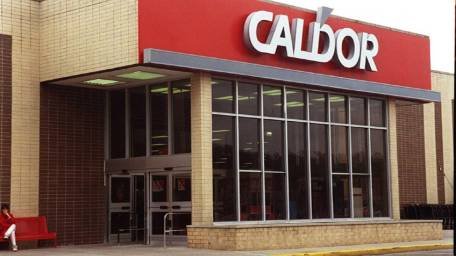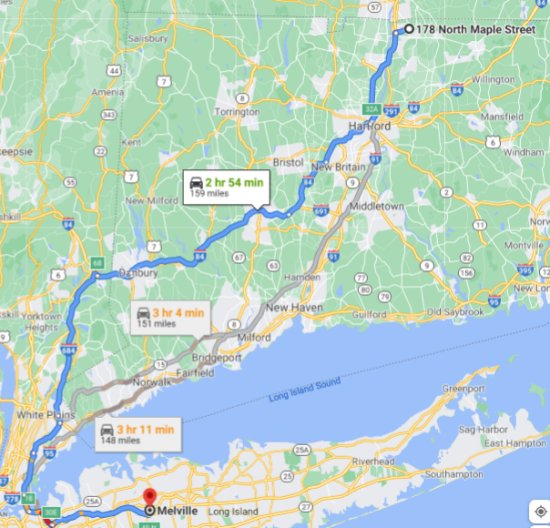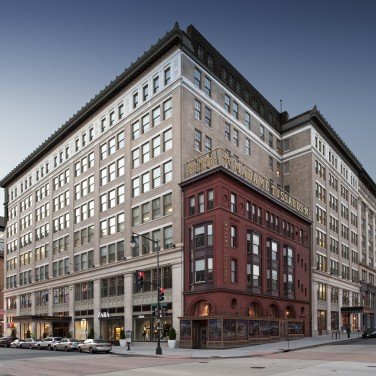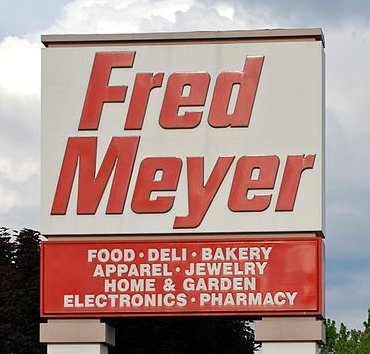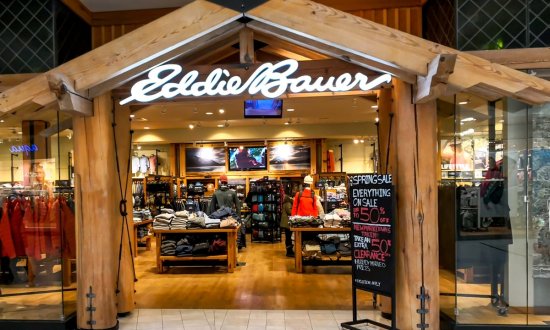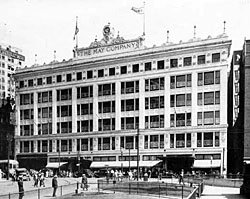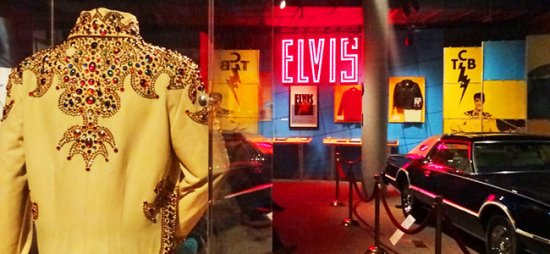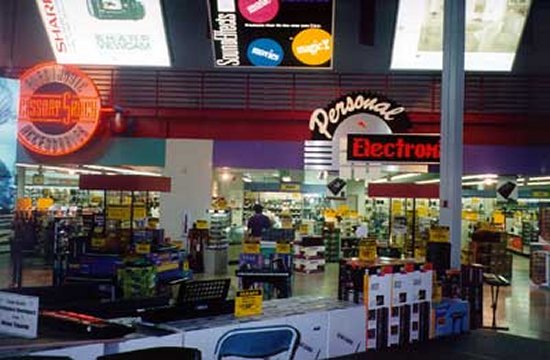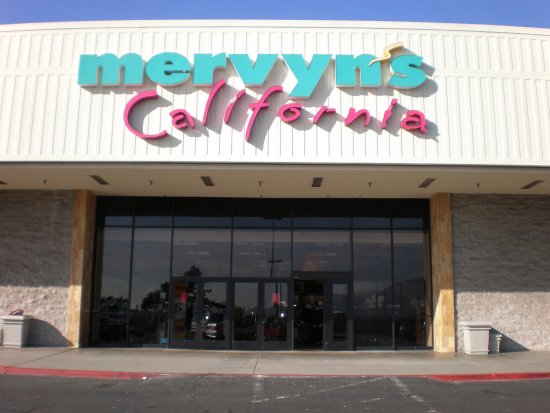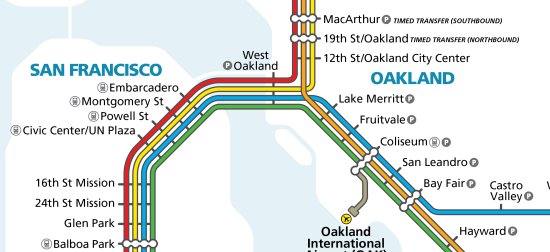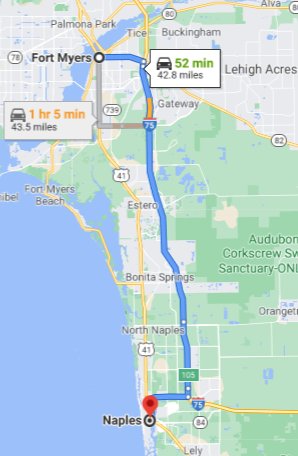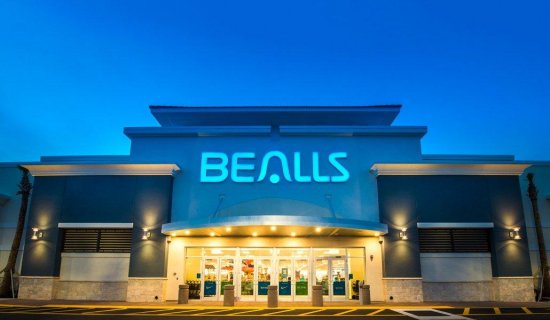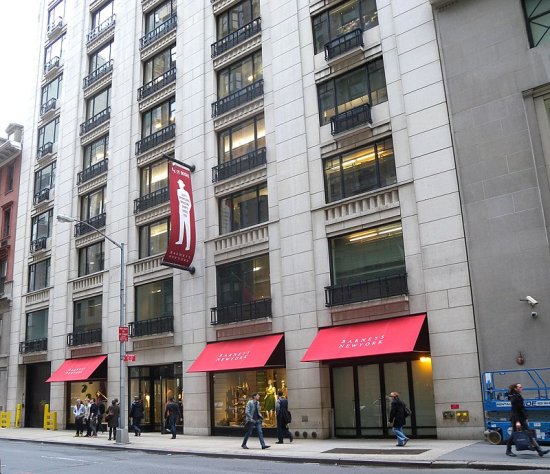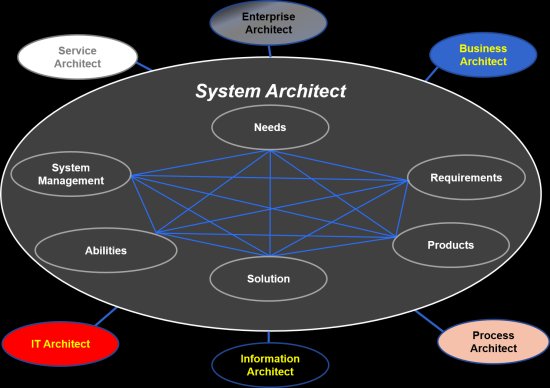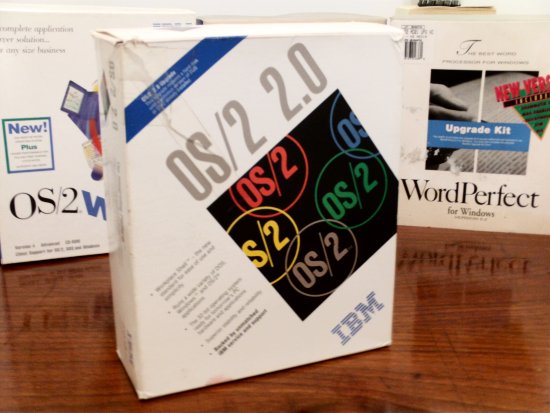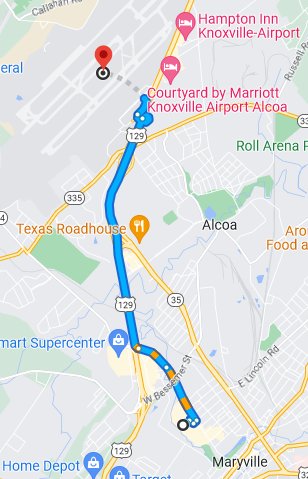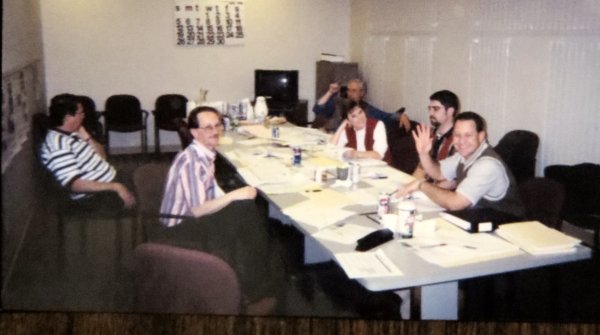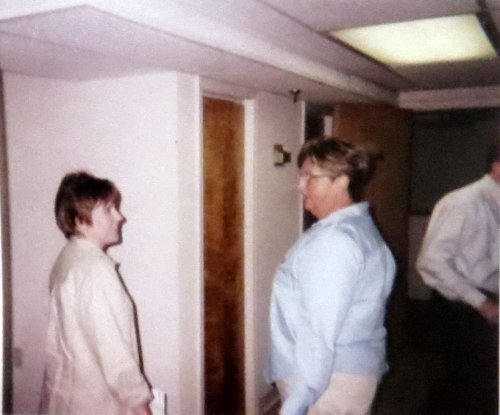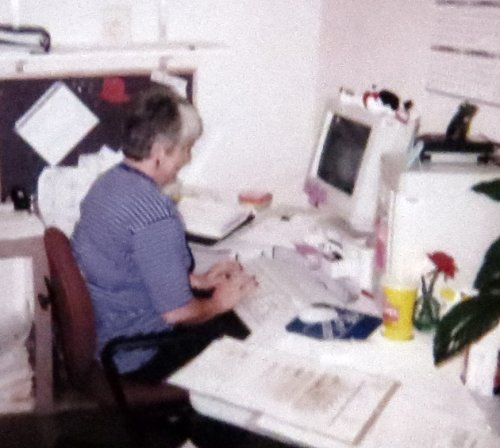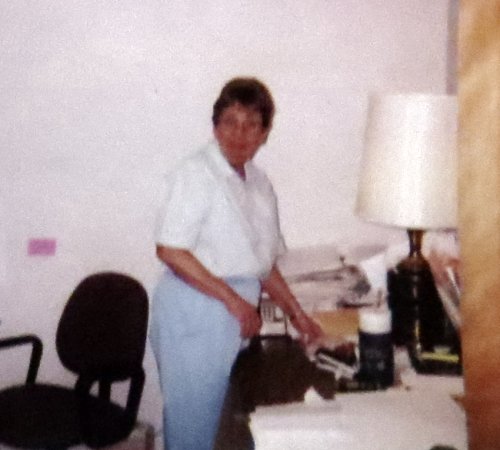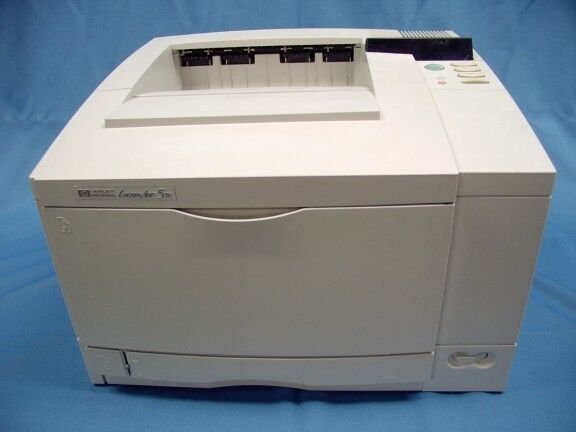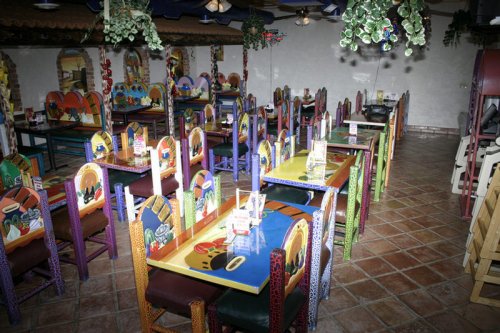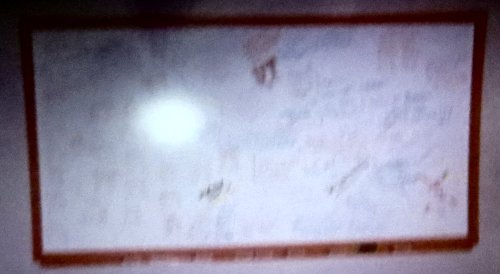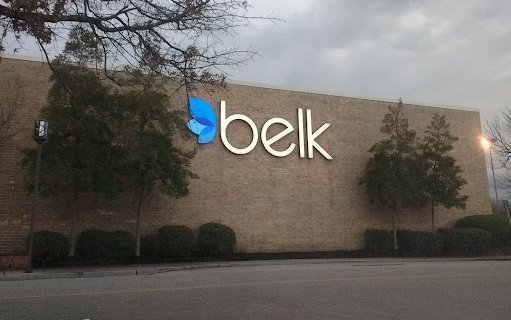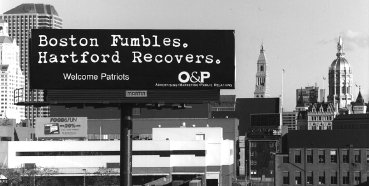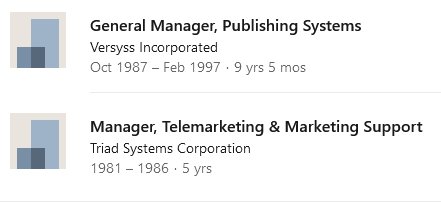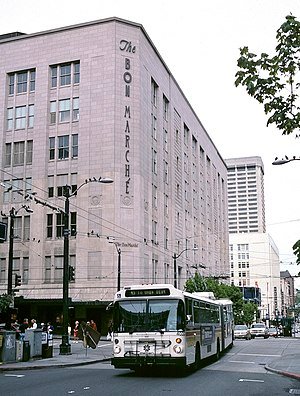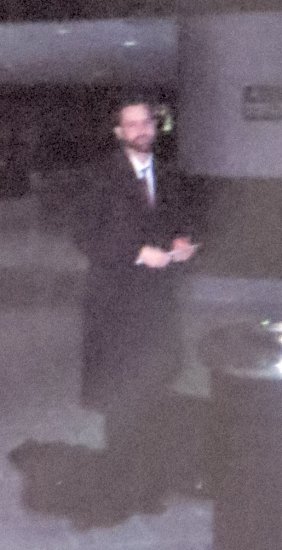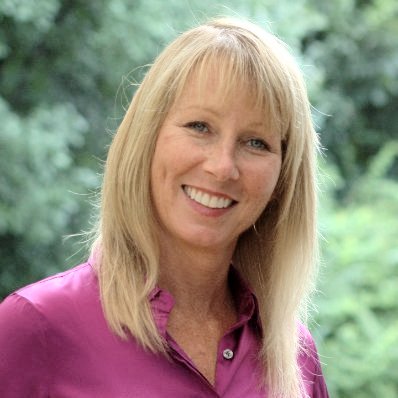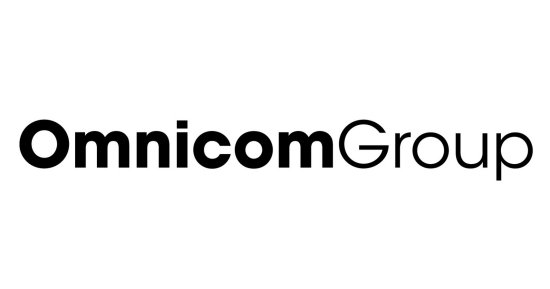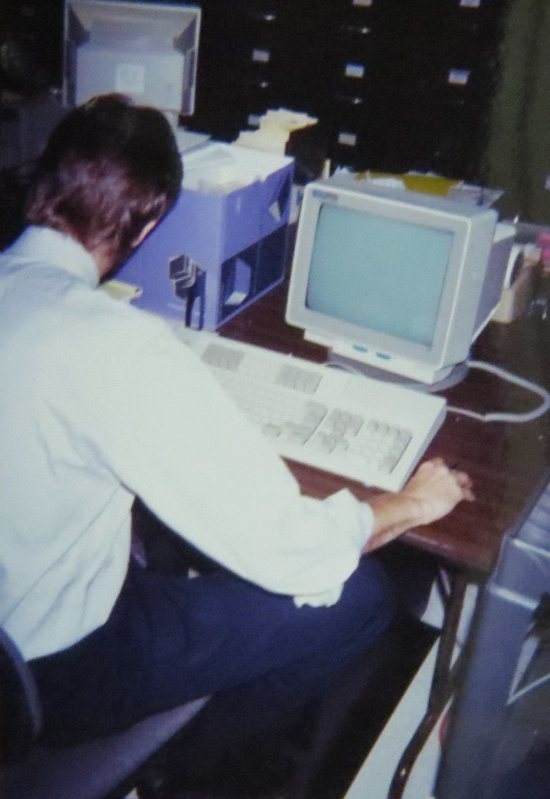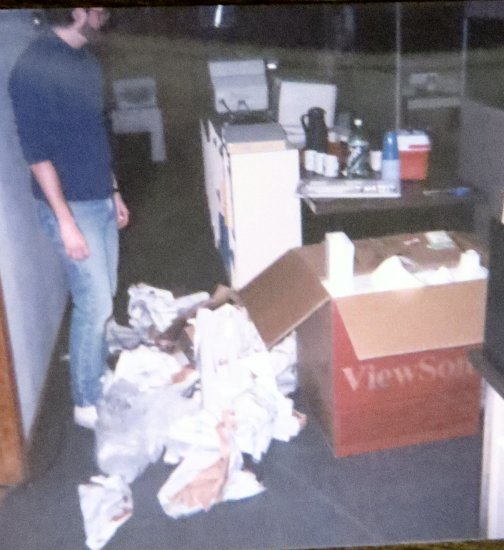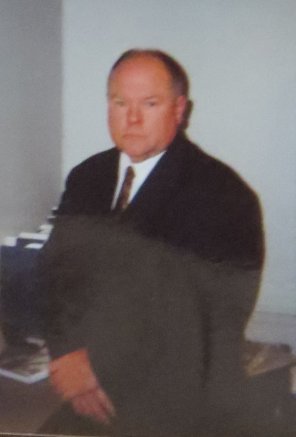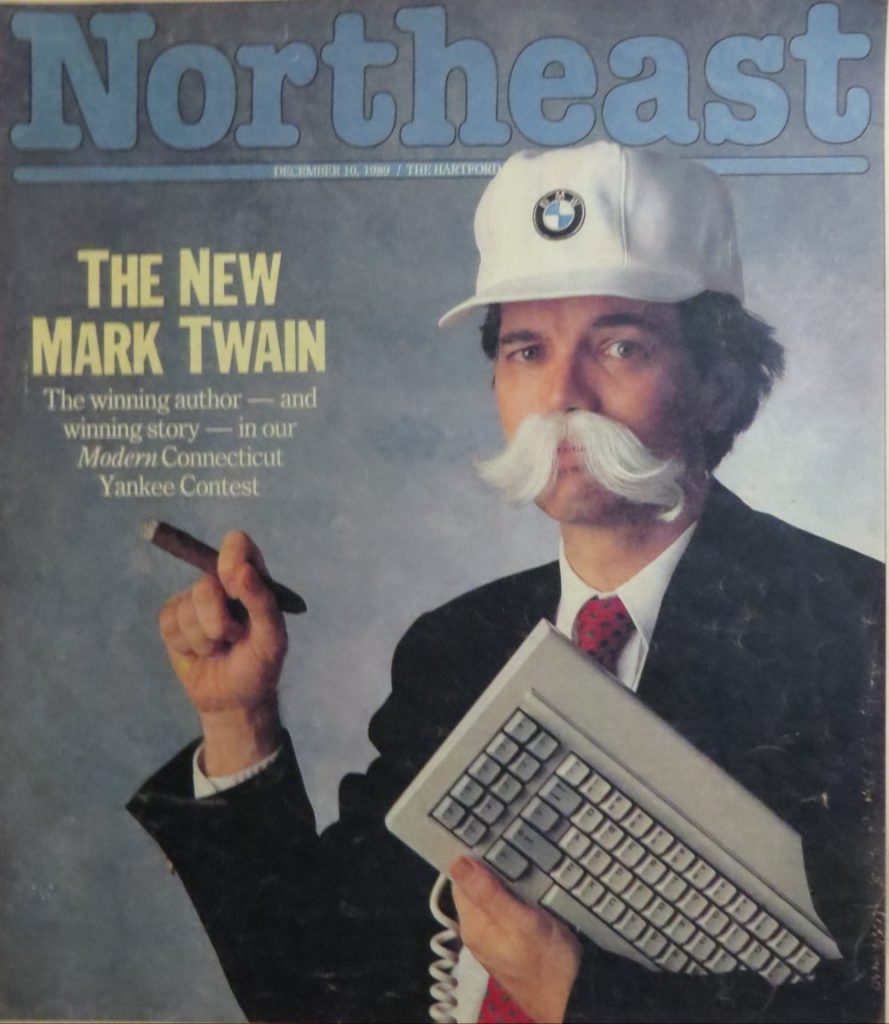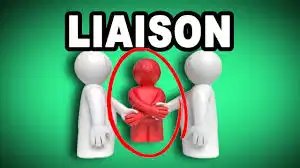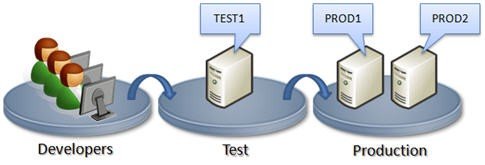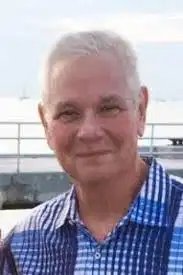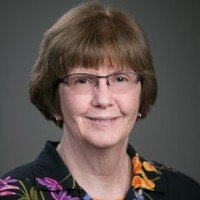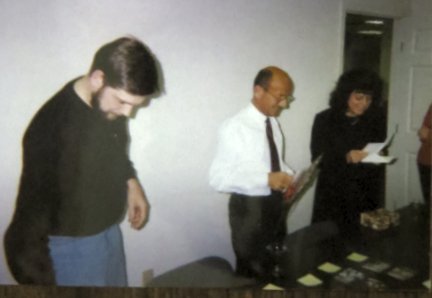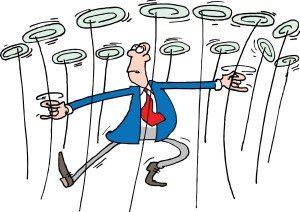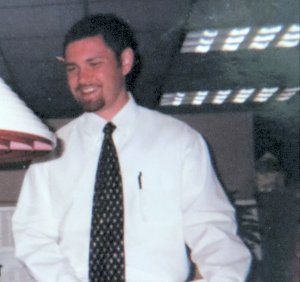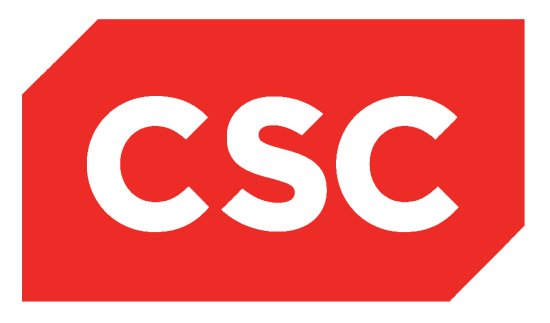A few notable failures. Continue reading
We had a very good record of closing AdDept sales. Most of the whiffs fell into one of two categories:
- Divisions of Federated Department Stores. Our relationships with various Federated divisions are described in detail here. They are not included in this entry.
- Companies that did not advertise enough to justify a high-quality multi-user centralized database. We actually sold the AdDept system to a couple of these anyway.
TSI’s first efforts to market AdDept were concentrated around New York and New England. I figured that there were not very many retailers who could afford the system to keep track of advertising, but, then again, I did not really expect to justify the cost of the system at Macy’s in the very first module that we activated—ad measurement.
Our first attempt was a quintessential whiff. Kate Behart (much more about her here) had been in contact with someone in the advertising department at Caldor, a discount department store based in Norwalk, CT. Kate arranged for me to give a presentation to them at the IBM office in Norwalk. Of course, we had to make sure that the office had the BASIC program, and I had to install both the AdDept programs and some data that I had dummied up from Macy’s real data.
My presentation was flawless. The only problem that I encountered that day was the lack of an audience. No one from Caldor showed up. We never did find out why not. Kate called them repeatedly, but no one returned her calls. It may have had something to do with the fact that in 1989, the year that we installed the first AdDept system at Macy’s, the May Company sold Caldor to a group of investment houses.
Caldor went out of business in 1999.
I also paid a visit to another local retailer, Davidson and Leventhal, commonly known as D&L. Theirs were not exactly department stores, but they had fairly large stores that sold both men’s and women’s clothing. So, they had quite a few departments. The stores had a good reputation locally. The headquarters was in New Britain, CT.
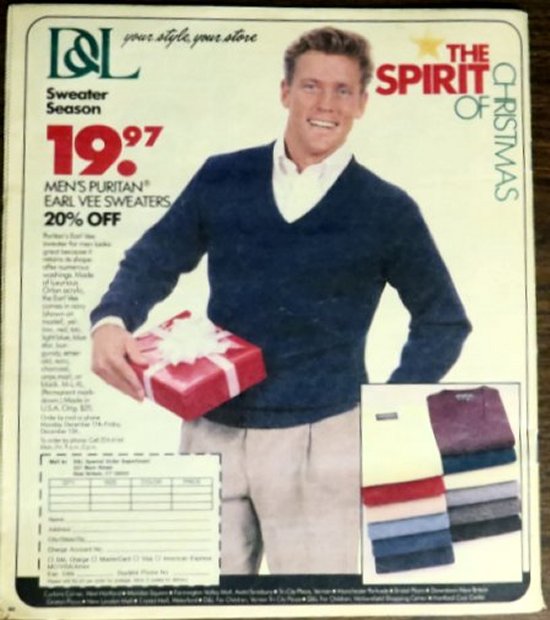
The advertising department only employed three or four employees. They wanted to know if they could use the computer for both D&L ads and ads for Weathervane, another store that they owned, as well. That seemed vaguely feasible to me, and so I said they could. In fact, we later did this for Stage Stores and for the Tandy Corporation, but both of those companies were much larger, and I had a much better understanding by then of what it entailed.
I didn’t even write up a proposal for D&L. The person with whom I spoke made it clear that what we were offering was way out of their price range.
D&L went out of business in 1994, only a few years after our meeting. Weathervane lasted until 2005.
I have only a vague recollection of doing a demonstration at IBM’s big facility in Waltham, MA, for a chain of auto parts retailers from Phoenix. The name of the chain at the time was Northern Automotive. My recollection is that I spoke with a man and a woman. If they told me how they heard about AdDept, I don’t remember it. After a very short time it was clear that AdDept was much more than the company needed. Although Northern Automotive had a lot of stores with four different logos, it only ran one ad per week. So there was really not much to keep track of. I had the distinct impression that the demo was just an excuse for the couple to take a vacation in New England on the company’s dime.
I don’t remember either of their names, but the experience list on LinkedIn for a guy named Paul Thompson (posted here) makes him a strong candidate. Northern Automotive changed its name to CSK Auto, Inc. not long after our meeting. In 2008 CSK was purchased by O’Reilly Auto Parts.
Won’t Paul be surprised to be busted thirty years later in an obscure blog?
Tom Moran (more details here) set up an appointment with employees of Genovese Drugs at its headquarters in Melville, NY. The two of us drove to Long Island to meet with them.
I probably should have talked to someone there over the phone before we left. The only impression that I remember getting from the meeting was that they were not at all serious about getting a system. We had a great deal of trouble getting them to describe what the advertising department did at the time and what they wanted to do. I was frustrated because I had considered this a relatively cheap opportunity to learn how chains of pharmacies handled their advertising. It was actually a waste of time and energy.
Tom tried to follow up, but he got nowhere. We did not submit a proposal.
J.C. Penney bought the company in 1998 and rebranded all the stores as Eckerd pharmacies.
While I was working on the software installation at Hecht’s in 1991, Tom Moran coordinated our attempt to land the other big department store in the Washington, DC, area, Woodward & Lothrop, locally known as Woodies. I found a folder that contains references to correspondence with them. Tom worked with an IBM rep named Allison Volpert1. Our contacts at Woodies were Joel Nichols, the Divisional VP, and Ella Kaszubski, the Production Manager.
As I browsed through the file, I detected a few warning signs. The advertising department was reportedly in the process of asking for capital for digital photography, which was in its (very expensive) infancy in 1991. Tom was told that they hoped to “slip in” AdDept as part of the photography project. Furthermore, the fact that we were not dealing with anyone in the financial area did not bode well.
Finally, we had no choice other than to let IBM propose the hardware. Their method of doing this always led to vastly higher hardware and system software costs than we considered necessary. I found a copy of IBM’s configuration. The bottom line was over $147,000 and another $48,600 for IBM software. This dwarfed what Hecht’s had spent. If the cost of AdDept was added in, they probably were facing a purchase price of over a quarter of a million dollars! That is an awful lot to “slip in”.
I don’t recall the details, but I remember having an elegant lunch during this period with someone from Woodies in the restaurant of the main store. It may have been Joel Nichols. It seemed like a very positive experience to me. He seemed eager to automate the department.
We lost contact with Woodies after early 1992. I seriously doubt that the advertising department even purchased the photography equipment that they had coveted. The early nineties were very bad for retailers. By 1994 the owner of Woodies and the John Wanamaker chain based in Philadelphia declared bankruptcy and then sold the stores to JC Penney and the May Company. Many of the stores were rebranded as Hecht’s or Lord and Taylor.
In some ways Fred Meyer, a chain of department stores based in Portland, OR, seemed like a perfect match for TSI. At the time they were almost unique, and we usually excelled at programming unusual ideas. Their approach to retail included what are now called “hypermarket” (department store plus groceries) stores, although they definitely had some much smaller stores as well. The one in downtown Portland was very small. I really thought that we had a good shot at getting this account, largely due to the fact that the IT department already had one or two AS/400’s. So, the hardware cost would probably be minimal.
I was asked to work with a consultant who, believe it or not, commuted from Buffalo, NY, to Portland, OR. I can’t remember her name. She knew computer systems but virtually nothing about what the advertising department did. She wanted me to tell her what AdDept could do, and she would determine whether the system would work for them. I have always hated it when a “gatekeeper” was placed between me and the users. I understand that they do not trust the users to make a good decision, but advertising is very complicated, and almost no IT consultants know much about it. I would not have minded if the consultant sat in on interviews that I conducted with people in advertising.
If I was allowed to meet with anyone from the scheduling or financial areas of the department, I do not remember it at all. I do remember spending an afternoon with the head of the company’s photography studio. AdDept had a module (that no one used) for managing shoots and another (used by Macy’s East) for managing the merchandise that is loaned to the studio for a shoot.
I remember the photo studio guy mentioning that they also did billable work for outside clients. He mentioned Eddie Bauer by name. He could not believe that I had never heard of it/him.
I probably botched this opportunity. Before agreeing to come out the second time, I should have insisted on meeting with whoever placed their newspaper ads and the person in charge of advertising finance. I did not want to step on the toes of the lady from Buffalo, but I probably should have been more aggressive.
Kate accompanied me on one of these trips. We probably flew on Saturday to save on air fare. On Sunday we drove out to Mt. Hood, where we saw the lodge and the glacier, and visited Multnomah Falls on the way back.
Freddie’s was acquired by Kroger in 1998, but the logos on the stores were maintained. There still is a headquarters in Portland, but I don’t know if ads are still created and/or placed there.
Aside from our dealings with Federated divisions2 TSI had very few whiffs during the period that Doug Pease (described here) worked for us. After one of our mailings Doug received a call from Debra Edwards3, the advertising director at May Ohio, a May Company division that had its headquarters in Cleveland. Doug and I flew Continental non-stop to Cleveland and took the train into downtown. My recollection was that we were able to enter the store from the underground train terminal.
The presentation and the demo went very well. I am quite certain that we would have gotten this account were it not for the fact that in early 1993 the May Company merged the Ohio division with Kaufmann’s in Pittsburgh. Management of the stores was transferred to Pittsburgh. Debra was hired as advertising director at Elder-Beerman Stores.
We stayed overnight in Cleveland and had time to visit the Rock & Roll Hall of Fame, which was right down the street from the huge May Co. building. I cannot say that I was greatly impressed with the exhibits.
A few years later Doug and I undertook a second trip to Cleveland to visit the headquarters of Sherwin Williams. Doug had talked extensively with the lady who was the advertising director there. He was very enthusiastic about the prospect of making this sale. By that time Doug had already closed a few big deals for us, and so I trusted his judgment. However, I could not understand how a company that really only sold one product could possibly need AdDept. Yes, they have thousands of stores, but how many ads do they run?
I don’t honestly remember anything about our discussion with them. Needless to say, Doug did not close this one, although he never stopped trying to revive it.
I don’t really count it as a whiff, but Doug was unable to close the deal with Liberty House in Honolulu after our epic trip to Hawaii in December of 1995. The details are recounted here.
Just as Marvin Elbaum had backed out of his contract with TSI for a GrandAd system in 1986 (as described here), so also one company signed an agreement for TSI’s AdDept system and, before we had installed the system, changed its mind. There was one big difference in the two situations. The second company was the Tandy Corporation, which had actually ordered installations of AdDept for all three of its retail divisions. At the last minute the company decided to close down Incredible Universe, one of the three divisions. The other two companies became TSI clients in 1997, as is described here.
It was not a big loss for TSI. IU was one of a kind. Its stores were gigantic multi-story combinations of electronics and theater. There were only seventeen stores, and only six were ever profitable. Those six were sold to Fry’s Electronics. The other eleven were sold to real estate developers at pennies on the dollar.
I did a demo for Mervyn’s California, a department store based in Hayward, CA. I think that I must have done the demo after finishing a training/consulting trip at Macy’s West in San Francisco. I cannot imagine that I would have flown out to the west coast to do a demo without spending a day or two gathering specs.
The IBM office nearest to Hayward was in Oakland. I took BART in the late afternoon from San Francisco to Oakland. There was quite a bit of excitement at the Holiday Inn at which I was staying. Someone had been murdered on the street in front of the hotel the previous night. There was one other very peculiar thing about this stay. I checked into a Holiday Inn with no difficulty, but I checked out of a different hotel (maybe a Ramada?). The hotel had been sold, and its ownership had changed while I was asleep.
The demo went fine. The guy who had contacted me—his name was Thiery or something like that—liked what he saw. However, the sale never advanced any further. This was almost always what happened whenever I got talked into doing a demo without taking at least a day to interview the potential users. At the time that I did the demo Mervyn’s was, unbeknownst to me, owned by Target. This might have explained the lack of progress. Target may have been restricting or rejecting any capital purchases at the time.
Mervyn’s was sold to some vulture capitalists in 2004. A much smaller version of the chain went out of business in 2009.
For some reason Doug and I once had a very short meeting with the president of Gottschalks, a chain of department stores based in Fresno, CA. He told Doug and me that he would get all of the other members of the Frederick Atkins Group to install AdDept. This organization (absolutely never abbreviated by its initials) somehow enabled its members to shop for foreign and domestic merchandise as a group. Nearly every department store that was not owned by the May Company or Federated belonged to it.
A few years after he made this promise he (or someone else at Gottschalks) arranged for me to speak before the members at one of their conventions in Naples, FL. I flew to Fort Meyers and rented a car from there. Naples was beautiful and reeked of new money. I gave my little spiel, but I did not have an opportunity to interact with any of the members of the audience. So, I did not get any direct feedback.
We eventually did sign up a few members of the group—notably the Bon-Ton (described here) and Elder-Beerman (described here). I don’t know whether my speech had any effect.
I think that the Frederick Atkins Group is defunct in 2021. The references to it that I could find on the Internet were all from decades past.
In (I think) 1999 Doug Pease and I made an unproductive trip to Columbus, OH, to talk with the IT director of of Value City about the possibility of installing the AdDept system for use by the advertising department. That adventure is described here.
TSI got a phone call from a chain of furniture stores in coastal Virginia, Norfolk4, as I recall. As part of my crazy automotive support trip, I stopped by to talk with the advertising director at this company on my journey from Home Quarters Warehouse in Virginia Beach to Hecht’s in Arlington. I spent a couple of hours with him. When I discovered that the company had only three stores, I knew that this was a mistake. I told him that our software could address his problems, but the cost and effort would not be worth it for either of us. I advised him to hire someone who was a wiz with spreadsheets.
I think that I got a free cup of coffee out of it.
I can’t tell you what happened to the company thereafter because I don’t even remember its name.
We had two reasonably hot leads in 2000. I had to handle both of them myself. The first was at Bealls department store, which has its headquarters in Bradenton, FL. This was another situation is which I had to deal with the IT department rather than the advertising department. I am pretty sure that the company already had at least one AS/400. I have a few notes from this trip, but it is not clear whether I intended to do the demo on their system or on one at a nearby IBM office.
In any case I think that there was a technical problem that prevented a successful installation of the software needed for the demo. So, I had to improvise, and I did not get to spend much time with the people who would have benefited from the system. The whole thing made me very depressed.
I had some free time, and so I went to the beach. I stopped at a Jacobson’s store to buy a tee shirt to wear at the beach. The cheapest tee shirts in the store cost $100!
The beach was lovely, and it was unbelievably empty. The weather was pretty nice. A beach in Connecticut would have been packed in this type of weather.
We did not get the account, but the tale has an interesting coda. Bealls is still in business today. For years Bealls could not expand outside of the state of Florida because a different store with exactly the same name was already using it in other states. These Bealls stores were run by Stage Stores, a long-time AdDept client that was based in Houston. Stage Stores was still using AdDept when TSI went out of business in 2014.
In 2019 Stage announced that it was changing all of its stores into Gordmans, its off-price logo (which did not exist while I was working with them). When the company declared bankruptcy Bealls purchased, among other things, the right to use the Bealls name nationwide.
I remember going to Barneys New York in late 2000 to talk with someone in advertising. I also have discovered three emails that I sent to Christine Carter, who was, I think, either in charge of the advertising department or in charge of the financial side. Barneys only had twenty-two stores, and that included some off-price outlets. I don’t know how much they actually advertised.
We never heard from them after my last email, which emphasized how easily AdDept could be adapted to differing needs even for companies the size of Barneys. By this time the very affordable AS/400 model 150 had been introduced. It would have been perfect for them.
I think that Barneys is dead or nearly so in 2021. All of the stores in the U.S have been closed, and even the “Barneys New York” brand was sold to Saks Fifth Avenue. However, the company also had a Japan division, which is evidently still operational.
I received a very unexpected phone some time in 2001 or 2002. It came from a man who had formerly worked at Saks Fifth Avenue and had taken a job as a Vice President at Sears. He knew that the advertising department at Saks had been doing things with its AdDept system that Sears’ advertising department seemed utterly incapable of. He invited me to the Sears headquarters in Hoffman Estates, IL, to investigate the possibility of installing AdDept at Sears.
At about the same time I had been in contact with the agency in a nearby town that Sears used for buying newspaper space and negotiating newspaper contracts. They wanted to talk with me about the possibility of working together. The agency’s name was three initials. I think that one was an N, but I am not sure.5
I arranged to spend consecutive days at the two places. It was cold on the day that I visited the agency. I learned that it recruited new clients by claiming that they could negotiate better rates for them because they also represented Sears. I suspected that this was baloney. Sears was a bid dog nationwide, but the amount of newspaper ads that they bought in any individual market was not that impressive. They were just in a lot of markets.
After the people explained the services that they offered to clients, I remarked that about 10 percent of what they did overlapped with about 10 percent of what we did. Privately I could not imagine that any of our clients who would benefit from their services.
I told them about AxN, our Internet product. They informed me that the papers did not want to sign on to their website for insertion orders. Of course, they wouldn’t, and they had nothing to hold over the papers.
We ended the meeting with the usual agreement to stay in touch and look for synergies, but privately I considered them the enemy.
The next day was bitterly cold, and there was a strong wind. I located the sprawling Sears complex and parked my rented car in a lot that was already nearly full. I had to walk a long way to the main building, and I have never felt as cold as I did on that walk.
I could hardly believe it when I walked into the building. The ground floor was billed with retail establishments—a drug store, a coffee shop, a barber shop, and many more. I had to take the escalator up to get to Sears. I was met there by the woman with whom I had been in contact. She was from the IT department.
She took me up to meet the “advertising team”. Six or eight people were assembled in the room, and they all had assigned roles. I remember that one was the “system architect”, and one was the “database manager”. I almost could not suppress my amusement. What did all these people do? There was no system, and there certainly was no database. At TSI I handled essentially all the roles that everyone at the table described.
They asked me some questions about the AdDept system. When I told them that it ran on the AS/400, the system architect asked me if that system was not considered obsolete. I scoffed at this notion and explained that IBM had introduced in the AS/400 64-bit RISC processors that were state-of-the-art. I also said that, as far as I knew, the AS/400 was the only system that was build on top of a relational database. That made it perfect for what AdDept did.
They informed me that Sears was an OS/26 shop. I did not know that there was such a thing. In the real world Windows had already left OS/2 in its dust by that time. In all my time dealing with retailers I never heard anyone else even mention OS/2. It might have been a great idea, but IBM never did a good job of positioning it against Windows.
Besides, just because the corporation endorsed OS/2 should not eliminate consideration of multi-user relational databases where appropriate. The devices with OS/2 could serve as clients.
They explained to me that Sears’ advertising department had hundreds of employees, most of whom served as liaisons with the merchandise managers. Most of the ads were placed by agencies. I presume that the newspaper ads were produced in-house. No one whom I talked with seemed to know. The people on the committee did not seem to know anything about how the department did budgeting or planning.
Someone talked about Sears’ competitors. The example cited was Home Depot. I don’t know why this surprised me. I must have been taken in by the “softer side of Sears” campaign a few years earlier.
After the meeting my escort took me to a remarkable room that was dedicated to the advertising project. It was a small theater that had ten or so posters on the wall with big Roman numerals at the top: I, II, III, IV, etc. There were no statues, but otherwise I was immediately struck by the resemblance to the Stations of the Cross that can be found in almost any Catholic church in the world. I asked what the posters represented. The answer was that they were the “phases of the project”. I was stunned by the assumption that the project required “a team” and that it was or indefinite duration. No one ever allowed us more than a month or two to have at least portions of the system up and running.
At some point I was allowed to give my presentation. The man who had worked at Saks attended along with a fairly large number of people. Maybe some were from advertising. I was never allowed to speak with them individually.
My talk explained that AdDept was a relational database that was specifically designed for retail advertising departments. I described a few of the things for which it had been used by other retailers. I could not do much more than that. I had not been able to talk with any of the people in the department, and the IT people were clearly clueless.
When I returned to Connecticut I wrote to both my escort and the man from Saks. I told both of them that I did not know what the next step might be. I had not been given enough access to the advertising department to make a proposal. The whole experience was surreal. If someone had asked me to return, I would only have done it if I were granted unfettered access to potential users.
No one ever contacted us. I told Doug not to bother following up.
One puzzling whiff occurred during the very short period in which Jim Lowe worked for us. The strange case of Wherehouse Music is explored here.
Perhaps the strangest telephone call from a genuine prospect that I ever received was from Albertsons, a very large retailer with is its headquarters in Boise Idaho. The person who called was (or at least claimed to be) the advertising director there.
I had heard of Albertsons, but I did not know very much about the company. All I knew was that they were a chain of grocery stores in the west. Since advertising for grocery stores is basically limited to one insert/polybag7 per week, they had never seemed to be great prospects for AdDept. However, I never hung up on someone who expressed interest in the system.
The problem was that this lady insisted that I fly out to Boise to meet with her and her crew the next day. I tried to get her to explain what the situation was, but she said that she had no time to talk. She needed to know if I would make the trip. It was a little tempting for a peculiar reason. Idaho was one of the few states8 that I had never visited. Still, this sounded awfully fishy. I passed.
The incredibly bumpy road that Albertsons has traveled is documented on its Wikipedia page, which is available here. I don’t remember when the call from the advertising director came. I therefore have no way of knowing whether she was in charge of advertising for a region, a division, all of the grocery stores, or none of those. I might well have passed up an opportunity that might have extended the life of the company. Who knows? It looked like a goose, and it honked like a goose, but maybe going to Boise would not have been a wild goose chase.
Jeff Netzer, with whom I had worked in the nineties at Neiman Marcus (recounted here), called me one day in 2010. He asked me if I remembered him. I said that I did; he was the Aggie who worked at Neiman’s.
He informed me that he was now working at Sewell Automotive, the largest Cadillac dealership in the Dallas area. He said that they were looking for help in automating their marketing. I was not sure how well AdDept would work in that environment, but I agreed to visit them. His boss promised to buy me a steak dinner.
I flew Southwest to Dallas, and for the first time my plane landed at Love Field. It was much closer to Sewell than DFW would have been.
I found a great deal out about their operation. I doubted that we could do much for the agency for a reasonable amount of money. On my computer I recently found a three-page document dated September 23, 2010, in which I had listed all of the issues that I learned about at Sewell. A woman named Tucker Pressly entered all of their expense invoices into a SQL Server database. It was inefficient, and there were no programs to help them compare with budgets.
The main objective of the marketing department was to make sure that they were taking advantage of all available co-op dollars from Cadillac and other vendors. We could not help with this unless we wrote a new module. I described my reactions to their issues in a letter to Jeff.
I never heard back from Jeff, who left Sewell in 2012. Nobody ever bought me a steak dinner.
Sewell Automotive is still thriving in 2021.
In 2011 or 2012 I received a phone call from a lady from the advertising department at Shopko, a chain of department stores based in Green Bay, WI. I don’t recall her name. She said that she worked for Jack Mullen, whom I knew very well from both Elder-Beerman and Kaufmann’s. Before Doug Pease came to TSI, he had worked for Jack at G. Fox in Hartford.
I flew out to Packer Land to meet with her. They had a very small advertising department. They basically ran circulars in local newspapers on a weekly basis. As I remember, she and one other person ran the business office.
I worked up a proposal for the most minimal AdDept system that I could come up with and sent it to her. When I had not heard from her after a few weeks I called her. She said that the company was downsizing and, in fact, her position was being eliminated.
Jack also left the company in July of 2012. His LinkedIn page is here. Shopko went out of business in 2019.
1. Allison Volpert apparently still works for IBM in 2021. Her LinkedIn page is here.
2. As I write this I can easily visualize Doug stabbing a box with a pencil after a frustrating telephone conversation with someone from a Federated division.
3. I worked fairly closely with Debra Edwards when I installed the AdDept system at Elder-Beerman stores in Dayton, OH. That installation is described here. She was the Advertising Director there. Her LinkedIn page is here.
4. The “l” in Norfolk is silent, and the “ol” sounds much more like a short u.
5. I later learned that there were actually two affiliated agencies across the street from one another. I encountered the other one, SPM, in my dealings with Proffitt’s Inc./Saks Inc., which are detailed here. The agency was still around in 2023. Its webpage is here.
6. In fact IBM stopped updating OS/2 in 2001 and stopped supporting the operating system in 2006. I cannot imagine how Sears dealt with this. I pity their employees with nothing OS/2 experience at Sears on their résumés.
7. Polybags are the plastic bags that hold a group of flyers from diverse retailers. they are ordinarily distributed to people willy-nilly.
8. The others are Wyoming, Montana, North Dakota, and Alaska. I am not certain of Arkansas. I might have gone there with my grandparents when I was a youngster. The only place that I have been in Utah is the Salt Lake City airport.


